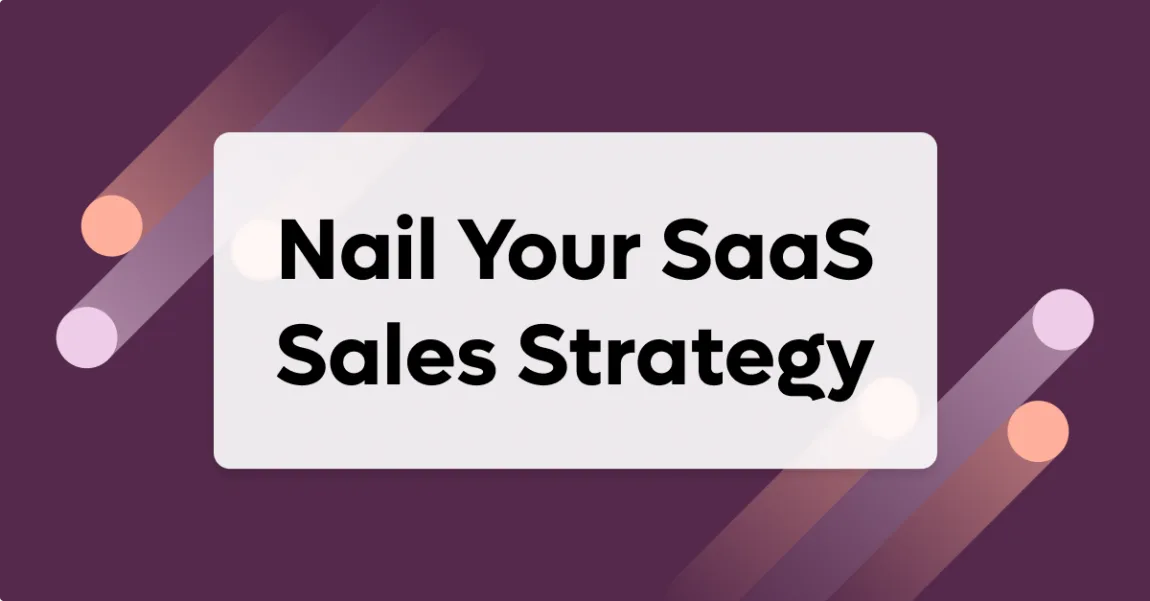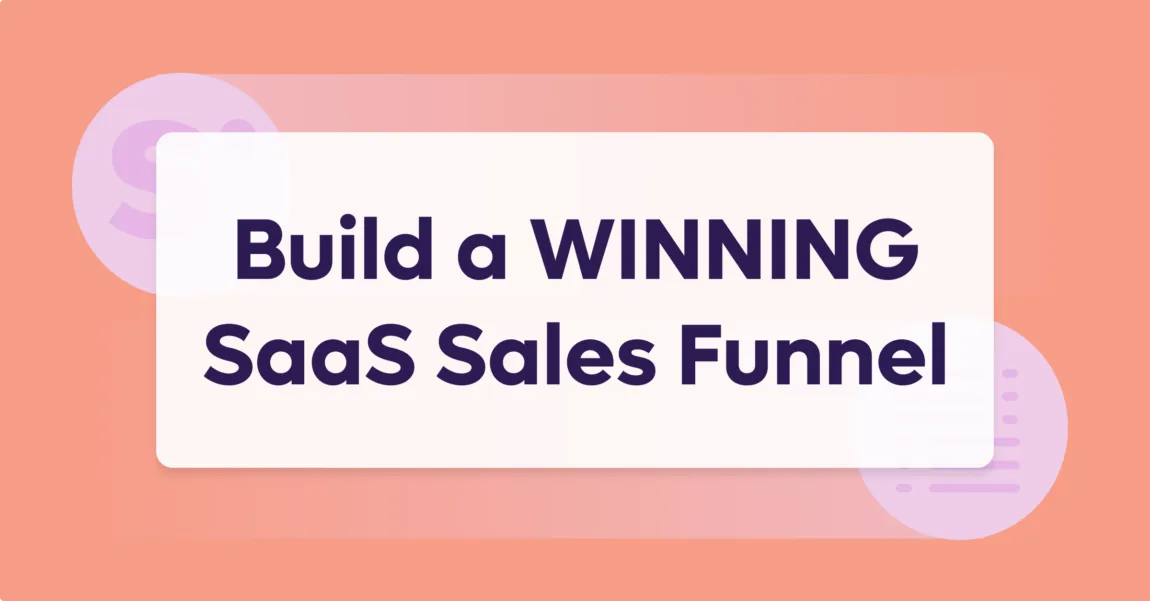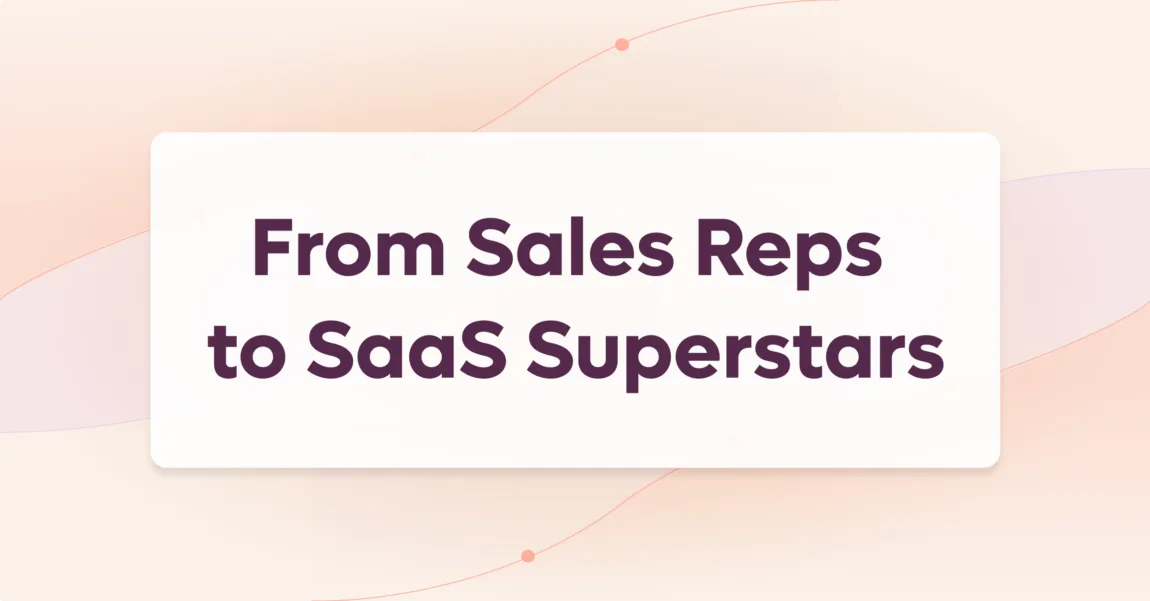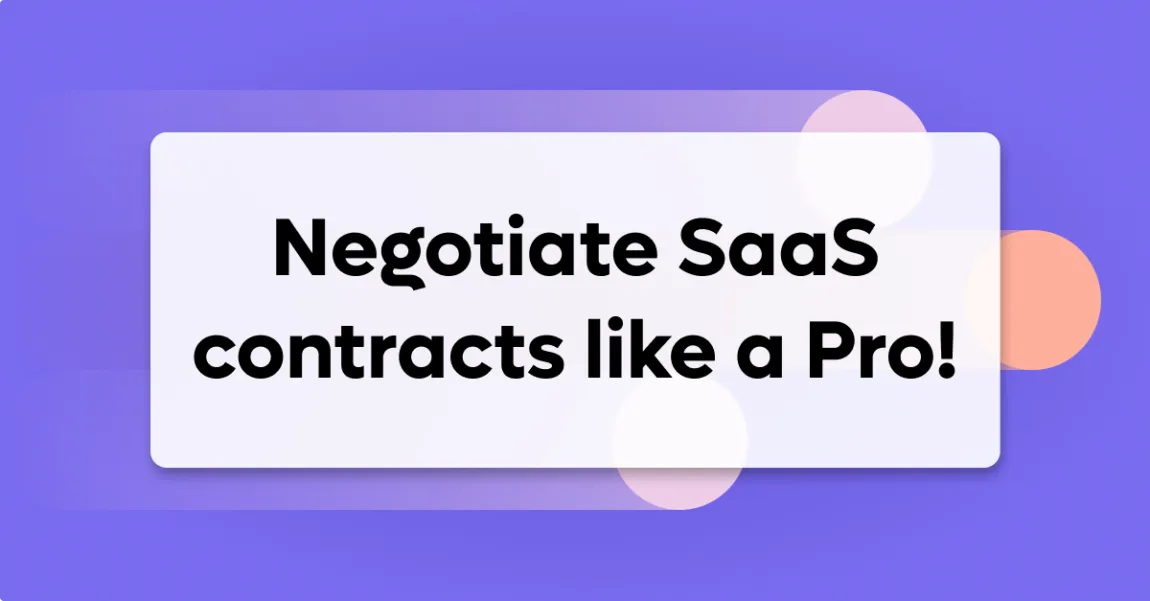These days, there’s a SaaS solution for nearly everything. Users have endless options, making the market competitive and making it even more critical for SaaS companies to differentiate themselves.
The SaaS sales process can be long and drawn out, involving lots of moving pieces and different players.
We put together a list of ten practices that you want to keep top of mind to solidify your SaaS sales strategy and position your company to stand out and succeed.
1. Know your market
First off, it’s crucial to ensure that there is a need for your product in the market. While this may seem obvious, data from CB Insights showed that 35% of startups that fail do so because there is no existing need for their product!
Make sure to conduct thorough market research before introducing your software to the world.
2. Choose a SaaS sales model
Do you want to sell to small businesses and individual users or large, enterprise companies? Or something in between?
There are three main SaaS sales models: self-serve, transactional, and enterprise, each ideal for a different type of customer and requiring different resources to succeed.
The self-serve model involves customers managing the whole flow (buying the product and starting to use it) completely independently, without ever speaking to a salesperson. It works best for low-cost products and companies that don’t have a dedicated sales team.
Marketing plays a big role in making potential customers aware of the company and product.
The transactional model relies on an inside sales team that generates, nurtures, and converts leads and typically involves a higher-priced product than the self-serve model.
The enterprise model consists of selling expensive solutions to large enterprise companies. The process can be drawn out and involve multiple different types of salespeople and even sales teams to close the deal.
3. Set goals & quotas
Goals are what guide you and keep you moving in the right direction. They’re critical for setting your path and making sure you stay on it. Your goals may come in the form of sales volume (for example, selling 100 units per month) or income (such as earning $100,000 in revenue per month).
It’s common for sales reps to also have activity goals that help monitor their performance, such as the number of phone calls, LinkedIn messages, meetings, or new leads generated in a certain period of time.
4. Determine your target audience
Because SaaS sales is a highly involved process, you don’t want to waste precious time chasing after prospects who don’t actually require your solution. Take time to learn about your target audiences and develop customer personas, so you can make sure that your sales team focuses on pursuing high-quality leads with whom your software is sure to resonate.
5. Focus on value-based selling
You know that your software will provide customers with game-changing business benefits, along with perks such as top customer service, a user-friendly interface, technical support, and regular releases with new features that customers actually want. Now it’s time for your target audience to know it, too!
Because SaaS can often require a large financial commitment, it’s vital to make your customers aware of the deep underlying value they’ll get in return. Take the time to learn about the prospect’s business and ask them what their business’s pain points are.
With this information in hand, you can introduce your product in a way that highlights exactly how it will solve their business challenge and translates into clear ROI for them.
Pro tip: Play devil’s advocate and prepare a list of potential questions and concerns that may arise during your pitches and interactions with prospects so you can be prepared with answers.

6. Top off your sales pitch with a high-value demo
You’ve heard all of your prospect’s concerns and explained exactly how your SaaS solution can help, but you know what they say: It’s better to show than tell!
An effective demo lets you showcase exactly how your SaaS solution can help your prospect overcome their challenges.
Seeing your product in action fosters trust and helps prospects make the leap.
For an even more effective demo that really resonates, customize your main points to cover how your product addresses their specific pain points, rather than a general laundry list of features. Consider going through a range of hypothetical scenarios that are relevant to your prospect and try not to talk too much about features that aren’t applicable to them. Be sure to give them an opportunity to ask questions at the end to tie up any loose ends.
7. Provide an effective but short free trial
Demos are great, but prospects won’t truly understand how your product works until they get to play around with it. A trial gives them a taste of the features that they’ll be able to enjoy without holding them back. Still, to keep them focused and ensure that they actually try it rather than letting it linger on the proverbial shelf, be sure to cap the trial period, limiting it to 7, 14, or 30 days, for example.
8. Nurture your trial users throughout the sales process
While they may be interacting with your product, don’t lose sight of the fact that trial users still haven’t made a final purchase. You got them in, but the sales process isn’t done yet.
Stay in touch with your prospects during their trial period. Provide useful tips that help them get more out of the product, and try to collect feedback from them on what they like, don’t like, expected to encounter, and more.
By keeping an eye on your trial users and observing their usage patterns, you can tailor your messaging to engage them more successfully, while also gathering insights for future product releases and marketing campaigns alike.
9. Remember to upsell
New customers are essential for growth, but your SaaS product sales strategy is incomplete if you neglect existing users.
Unlike new leads, existing customers are already familiar with your product, not to mention that they actively chose to work with you (and have stuck around!).
Their interest already gives you a leg up when it comes to offering them upgrades or other products.
Don’t take advantage of your relationship, though—when upselling to existing users, only reach out to them with offers that apply to them. Otherwise, you risk annoying them, which could quickly turn them sour.
10. Streamline your sales process
The SaaS sales process is long and sometimes tedious, so it’s important to seize every opportunity you have to streamline it. That’s where technology can help. A CRM can help you keep track of your prospects so you don’t lose momentum. Digital signature tools reduce the back-and-forth in getting the signatures you need to seal the deal. AI contract review platforms, such as Superlegal, can review and provide crucial feedback on your contracts in as little as a few hours, so you can close deals quickly without waiting around for lawyers. Superlegal can even weigh in to help you negotiate the best terms.
Nailing your SaaS strategy and incorporating the right players and tools can have a huge impact on your bottom line. These ten steps will help you get there faster.
Are you ready to close those SaaS sales as soon as possible? Try Superlegal for free today.







By entering your email, you agree to our Terms & Conditions and Privacy Policy.